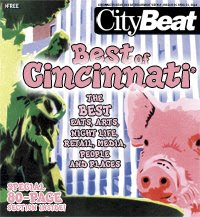I'm thrilled to post this for good friend and guest blogger, Melissa Lawson
Eating Local for Less
Call it cheap. Call it frugal. Whatever term you want to use – I’m it. I hate spending money when I don’t have to. I hate paying more than I need for an item. My household doesn’t have a lot of money coming in, so I have to make sure that I use every bit to the best of my ability.
Food is an area where I have a lot of financial control. I spend the least amount possible on groceries. I try to purchase as few types of items as I can. I get lots of raw ingredients and make many things myself. I love to cook and bake, so this is perfect for me.
Saving money on food – while still purchasing quality ingredients – can be done. A person needs to learn to take advantage of every food opportunity. My family has been doing this for years. I never realized that a lot of the food we eat is local. A really good friend had to tell me. I thought I was just being cheap!
I save on produce by having a garden. We fenced in an area of our yard that is about 2,500 square feet. This is more space than we really need for the size family we have (three adults). My husband plants a variety of produce. We usually (weather dependent) have an abundance of tomatoes, zucchini, bell peppers, broccoli, green beans, etc. As anyone with a garden knows, this produce almost always tastes so much better than anything you can buy in the store. And if you are careful about how you grow things, it can cost a lot less. I take advantage of these things by canning and freezing enough to last the whole year.
My husband’s grandfather owns a farm about two-and-a-half hours away. He keeps cows. We are lucky that he sells us half a cow every year – at cost. It is enough meat to last my household a year. As an advantage, I know the cows were treated well during their lives.
My father-in-law loves to fish. Whenever he visits his father’s farm, they go fishing. Fortunately for us, they do not like to eat fish. So they clean it and freeze it. We get it all.
My father-in-law and his niece both have pear trees in their yards. They do not use the fruit. As long as I come pick them up, I can have whatever I want. I usually get enough to can and dehydrate some sliced fruit, as well as make some pear jam. It is more than enough for our family – and some to share with others.
(Susan's note - not only does their abundance allow them to be generous with friends or those in need it can also be used to trade for other local foods - I've personally traded local pork for some of that great beef, canned tomatoes, and yummy jams and jellies).
I realize that most of these options are specific to our family. Not everyone has enough land to grow a huge garden or in-laws that give things away. However if you are willing to do the work by asking around, you will probably find local food that you can get for free or cheap. For example: last fall my aunt noticed an apple tree as she drove past a golf course. We were able to take a grocery bag (cloth of course!) full of apples for free. I dehydrated them for a nice healthy snack and for future use in baking. Another example: a friend recently bought three acres in West Chester. He noticed walnut trees on his property. They gathered the nuts and are willing to share them with friends and family. All we need to do is ask.
If a person is willing to put in the effort, there are ways to eat local all year long for less.
Canning
I have always said that I was born in the wrong century. I love all the old-fashioned ways of doing things. I love to sew and crochet, cook and bake. And I love to preserve food.
In my case, that usually means canning. I do freeze some things, but I have a limited amount of space due to the freezer being full of cow.
I am self-taught in the art of canning. I tried to get my husband’s grandmother to teach me, but she just told me to get a book. To be honest, I think she forgot how to do most things (she has Alzheimer’s). So I got a Ball Canning Book and read the steps.
Every year I try to add another type of item to my list. The first year I only did green beans and diced tomatoes. The second year I added tomato juice and jams/jellies. Each year I think I get better and more efficient. I now have a list of things I am able to can comfortably. And I have not yet made anyone ill!
Starting to can doesn’t have to cost a lot of money. People think it would be expensive to buy the jars they need. If you buy them new in the store, they are expensive. However, there are other ways to get them.
Let everyone know you are interested in canning. You might be surprised who has supplies. I was lucky that my husband’s grandmother was not canning anymore. She had supplies (canner, jars and rings) that no one else wanted. I took them all. My husband’s grandfather’s third wife’s sister heard I was canning. She sent a load of jars to me. And a friend’s father gave me a barrel full of jars. All I need to do is clean them.
Look at thrift stores or yard sales. Check ads on Craigslist or Freecycle. My aunt is constantly at the thrift store. She is always buying jars for around nine cents each. Another aunt goes to yard sales. She sees jars almost every week. I see ads on the Internet all the time.
If a person is willing to put in the effort, there are ways to eat local all year long for less.







